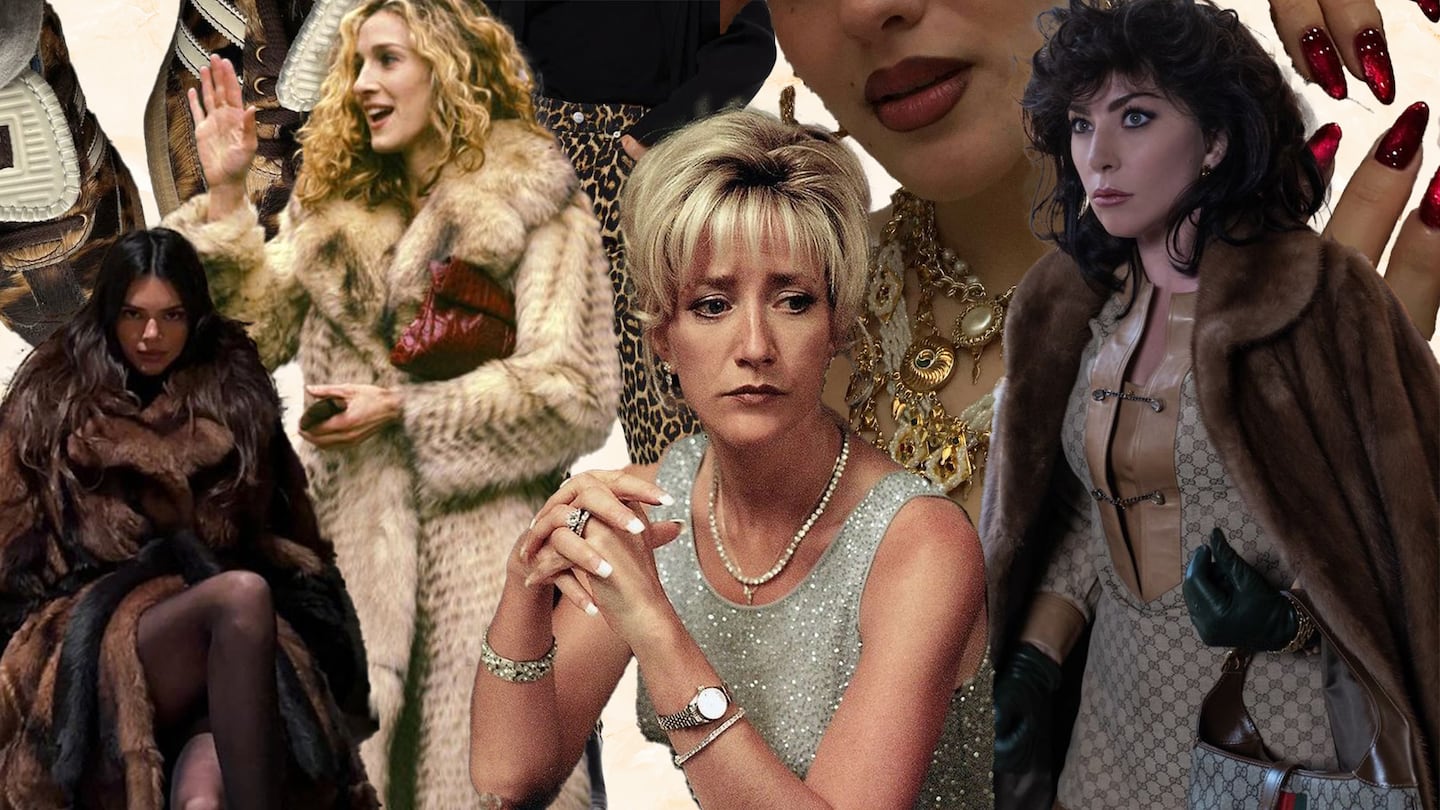
The Business of Fashion
Agenda-setting intelligence, analysis and advice for the global fashion community.

Agenda-setting intelligence, analysis and advice for the global fashion community.

Edwards-Lowell Furs didn’t expect 2023 to be a good year.
In anticipation of the ban on the sale of new furs that went into effect in its home state of California in January 2023, the company had transitioned its business from selling furs to storing them. Plus, dwindling sales — declines of around 50 percent year-over-year — had forced it to sell its building in Beverly Hills.
But then owner Paul Matsumoto connected with Natalie Bloomingdale, founder and CEO of e-tailer The Sil, and the two teamed up to host an online auction of coats from Edwards-Lowell Furs’ extensive collection of pre-owned furs on The Sil’s Instagram.
“We sold the first batch of furs in a matter of minutes,” said Bloomingdale. The two now host sales three times a month, and Matsumoto said it’s breathed new life into the business.
ADVERTISEMENT
This year may bring even more demand thanks to the explosion of the “Mob Wives” aesthetic on TikTok. Characterised by animal prints, heavy gold jewellery, glossy leather trousers, perfectly coiffed hair and, of course, a massive fur coat, the trend has already racked up over 127 million views on TikTok, according to Trendalytics. Its emergence has been fuelled by several factors — the 25th anniversary of HBO’s mafia-centric hit, “The Sopranos,” the onset of a colder winter stateside, and a burgeoning interest in fur among younger consumers.
It’s quite a pivot from just a few years ago, when it appeared fur’s trajectory was on an unstoppable decline. Since the late 2010s, brands and retailers including Canada Goose, Gucci, Net-a-Porter, Versace, Prada, Neiman Marcus and Michael Kors all announced their intention to phase out fur products. Israel has enacted a ban on new fur sales, similar to California’s, while Italy and Norway announced they would stop fur farming. In 2021, Kering chief executive François-Henri Pinault said that fur had “no place in luxury.”
Cut to 2024, and sentiment around fur has shifted as the mob wife aesthetic endears the material to a new generation of consumers. It’s bleeding into fashion and Hollywood too: Kendall Jenner and Dua Lipa were recently spotted in real and faux fur coats, respectively, and last week Louis Vuitton and Dolce and Gabbana debuted their fur coat offerings for the men’s Autumn/Winter season.
But this fur moment is different from the past. Now, it’s secondhand and fast fashion retailers that are reaping the benefits of fur’s viral moment, as are alternative material startups and brands with good quality faux fur offerings.
“People are really craving the glamour of fur,” said Alexandra Yvette, a Los Angeles-based illustrator who has been wearing real fur for over five years.
On TikTok, trends can rise — and then fall — in a matter of weeks, if not days, and “mob wife” is no exception. While weekly searches have grown by 21.3 percent year-over-year, Trendalytics anticipates this fad to be short-lived, with an arc of roughly six months.
“Mob wife is more of a reflection of the diminished meaning of trends and aesthetics,” said Mandy Lee, a trend analyst and forecaster. “We seem to be in this endless cycle of nostalgia for trends that were rooted in subcultures, values and context. Today, they are quite literally costumes that people put on and take off everyday.”
Anticipating and preparing for these viral moments can be challenging for brands that don’t already have corresponding products in their assortment — because fickle consumers are itching to hop on the bandwagon, selling products on a preorder model won’t work, said Lee.
ADVERTISEMENT
Brands that are at the right place at the right time can expect to earn dividends. And because so many luxury labels have moved away from fur, in the case of the “mob wife” trend, that’s more likely to be fast fashion or mass market retailers. A faux fur jacket from Zara has emerged as one of the leading products benefitting from the trend, with searches and social interest in Zara’s fur jacket products seeing an increase of 212.7 percent in search and social buzz compared to similar products last year, according to Trendalytics.
“Even though fur was once synonymous with luxury, fast fashion brands are really well-positioned for this moment … selling on points of affordability and as a suitable alternative,” said Kayla Marci, senior retail analyst at Edited.
For those who want the real deal, vintage provides a guilt-free option. On TikTok, users like Yvette are encouraging the purchase of secondhand furs over new, making this viral moment key for vintage fur sellers like The Sil or even The RealReal. The off-price market segment, which consists of secondary retailers, thrift and vintage retailers, and discount sites make up a sizeable share of the market for all real and faux fur coats at approximately 33 percent, compared to luxury which represents only 20 percent, according to Trendalytics.
“Sales have exploded,” said Matsumoto. “We’ve never sold this many units of used garments before.”
The mob wife trend may be destined to be short-lived, but the appetite for fur — or fur-like materials — will likely outlast its peak. As fur’s popularity has shifted, however, consumers’ values around sustainability largely haven’t, creating an opportunity for next-generation material startups like BioFluff and Spiber to fill the gap.
On the faux side, Japanese bio-tech startup Spiber has been working on fur alternatives using a protein-based fibre that is created through a similar process to brewing beer. Spiber genetically engineers microbes which are then fed sugar to yield different protein polymers. The polymers are extracted, dried and spun into fur-like fibres.
The company, which has two variations ready to come to market, opened its first industrial-scale plant in Thailand in 2022 with the hopes of growing its business and lowering the prices of materials. In coming months, Spiber will partner with a number of brands to develop custom fur products.
“We hope to underscore that you can have it both ways,” said Callie Clayton, head of global client relations at Spiber. “The look and feel of fur is possible without the cruelty.”
ADVERTISEMENT
Still, animal rights advocates aren’t thrilled with the resurgence, arguing that even if it’s a more sustainable option, more visibility for fur will inevitably stoke demand. PJ Smith of the Humane Society of the United States is hopeful that legislation introduced in the last couple of years is robust enough to curb demand.
“We can already see the end of the tunnel, the fur industry is dying, thanks to policies like fur bans,” said Smith. “Trends like these could lead to higher first sales but it won’t be enough to reverse the trajectory of the industry.”
After four decades of emotionally-charged campaigns, Peta founder Ingrid Newkirk can all-but declare victory in the war on fur. Taking on more widely-used animal-based materials will be harder, however.
While some companies have denounced the use of crocodile, snake and ostrich skins to make high-end leather goods, others are doubling down on the product category.
Kering brands like Gucci and Bottega Veneta banned fur years ago, but the French luxury group is extending the policy across all its labels.

Yola Mzizi is the Editorial Apprentice at The Business of Fashion (BoF). She is based in New York and provides operational support to the New York team and writes features for BoF and The Business of Beauty.
Practitioners of this historically behind-the-scenes profession are building powerful followings, riding a wave of interest in how the fashion sausage is made. But even the highest-profile PRs caution that the client still has to comes first.
Join us for a BoF Professional Masterclass that explores the topic in our latest Case Study, “How to Create Cultural Moments on Any Budget.”
When done effectively, a cultural partnership can rightfully earn its own place in the zeitgeist. But it’s not so easy as just hiring a celebrity to star in an ad campaign; brands must choose a partner that makes sense, find the format that fits best and amplify that message to consumers.
Calvin Klein’s chief marketing officer Jonathan Bottomley speaks to Imran Amed about the strategy behind the brand’s buzzy Jeremy Allen White-fronted campaign.